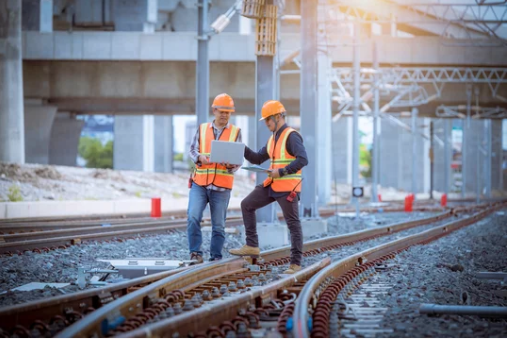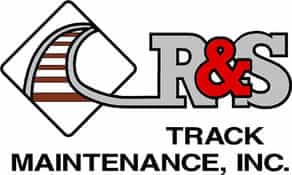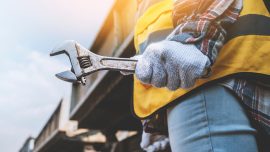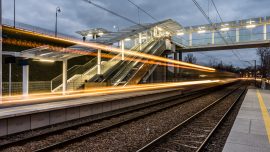
The Basics of Railway Safety
When you work in the railroad construction or railroad maintenance industry, you learn very quickly the importance of railway safety standards and precautions.
Railway Safety Standards for Railroad Companies
If you are the owner operator of a railroad company in the West, Midwest, or Southeast railroad lines there are standards to railroad safety that are required by the Federal Railroad Administration.
These standards that you should consider implementing for your rail company include:
- Grade Crossings
- Hazardous Materials
- Motive Power and Equipment
- Operating Practices
- Signal and Train Control
- Track
Railroad safety is something that the general public might not think much about, which is why we wanted to share these safety tips from the American Association of Railroads. It’s useful information for pedestrians, drivers, or really anyone who spends time around trains.
Railway Safety for Pedestrians
- The only safe place to cross railroad tracks is at a designated public crossing with a gate, crossbuck or flashing lights. Crossing anywhere else can lead to a citation or fine for trespassing.
- Railroad tracks, rail yards, trestles and equipment are private property, meaning you could face criminal prosecution if caught trespassing, to say nothing at the risks to your physical safety.
- Trains can take up to a mile to stop, making it nearly impossible for a locomotive operator who sees someone appear suddenly on the tracks to stop on time.
- Trains can overhang tracks by up to three feet on either side, with loose straps extending even further. This means if you’re in the right-of-way near the tracks, you run the risk of being hit by the train.
- Never cross tracks as soon as a train passes. There could be another train approaching from the other direction. Wait until you have a clear sight line in both directions before crossing at a safe place.
- If you see flashing red lights, a train is on its way. Never walk around or behind the gates once they’ve lowered and wait until lights have stopped blinking to cross.
- Recreational activities and railroad trestles are a bad combination. There’s not enough clearance for people to fish, bungee jump, walk or ride ATVs in these spaces.
- Never attempt to hop onto a train or other railroad equipment. One wrong step could cause you to lose a limb, or your life.
- A good rule for pedestrians and motorists alike: Remember that trains don’t follow a set schedule. One could come along at any moment.
Behind the wheel
- It is both illegal and dangerous to drive around lowered gates at a railroad crossing. Wait until they’ve lifted and the lights have stopped blinking to pass.
- If your vehicle stalls on the tracks at a railroad crossing, get out right away and move away from the tracks — even if there’s no train coming. Find the Emergency Notification System sign nearby and call the number to inform them about your vehicle.
- If you’re waiting at a multiple-track crossing, watch for a second train approaching from either direction and wait until things are clear to cross.
- Trains are moving faster than they appear. As with pedestrians, remember that they cannot stop quickly. It can take more than a mile for them to break if they see you.
- Cross train tracks at designated crossings, look both ways and cross quickly without stopping. It’s not safe to stop your car within 15 feet of the rails.
Railway Safety is Required in the Railroad Integrity Manual
Railroad safety is a two-way street, so to speak. Pedestrians, drivers, and railroads need to do their part, and we need to do ours.
R&S Track is committed to helping improve railroad safety with our railroad maintenance services. From surveying to consulting to track maintenance and inspections, our team knows what hazards to look for and can recommend the steps you can take to improve the safety of your rail crews, drivers and pedestrians alike. Contact us today to learn more.
For consulting advice on implementing a railroad safety protocol in your railroad, give us a call today!




0 comments
Write a comment